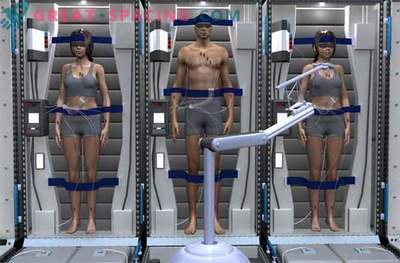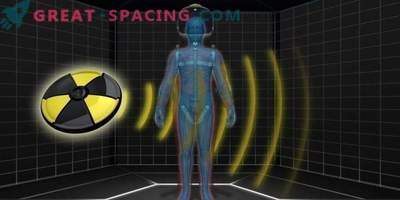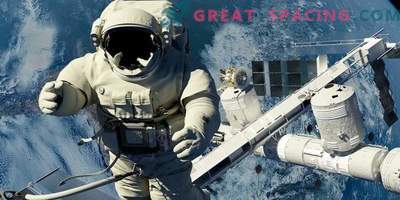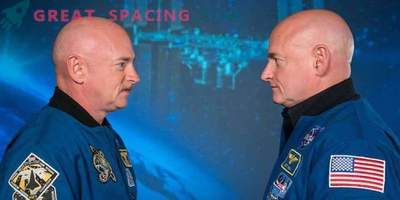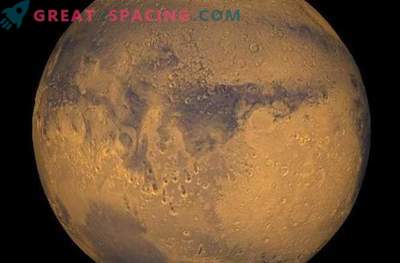
Space Engineering Company SpaceWorks Enterprises believes that the first human missions to Mars could use the sleep system for astronauts in the 2030s.
Can humanity copy bears and other hibernating animals to fall asleep for months or years? Although the technology is still at an early stage, the report of the aerospace engineering company SpaceWorks Enterprises suggests that this could happen in the next 10-20 years.
If the system functions, it can potentially reduce some of the risks in a long-term space flight. The perennial missions on the International Space Station have shown that the bones and muscles weaken over time, although exercise has been shown to act as partial countermeasures. But there are other points that need to be taken into account: for example, a sufficient amount of food or support for astronauts who are in a small space for several months.
If everything works out, then the sleep mode will reduce these needs and preserve the health of the astronauts before arriving at their destination. But on the road one way will take at least six months. Some sci-fi stories show that lingering sleep can be used to prolong life even on longer journeys, as was done in the flight shown in the movie “Passengers” last year. “Our concept was really inspired from various sources: from general ideas about long-term space travel in science fiction to rare stories about human survival under extreme conditions (cold weather, scuba diving, unmanned aircraft, etc.) and hibernation of animals”, - says the president and chief operating officer of SpaceWorks Enterprises and co-author of the article, John Bradford.
“Considering the issue of controlled sleep, we relied on the current medical practice of therapeutic hypothermia (target temperature control - TTM) as a possible way to maintain long-term metabolic suppression,” he continued. “Although we cannot make people actually hibernate, we believe that there is a chance to imitate this state. And this is quite enough. "
SpaceWorks provided early funding through NASA's Innovative Advanced Concepts (NIAC) program, which aims to design "forward-thinking ideas that could make future NASA missions breakthrough." NIAC offers funding for concepts that cannot yet be achieved by modern space technologies, but have chances for implementation in a few decades.
Bradford said that SpaceWorks is creating a “roadmap” to figure out how to make a long dream a reality. The first steps will be to find more funds for medical testing on Earth, possibly from foundations, private investors, or government investors, such as NASA, the US Department of Defense or the National Institutes of Health. “Our technology employs modern methods of treatment using mild hypothermia therapy. We plan to promote this opportunity to support a long-term suppression of metabolism, ”says Bradford. - "With a slight decrease in body temperature, we can achieve a significant decrease in the rate of metabolism."
“This approach opens up many new opportunities that can be introduced and applied to solve basic human medical problems in space flight and areas of risk such as muscle atrophy, loss of bone mass, increased intracranial pressure and radiation damage,” he added. “These new features will help create additional radiation protection in habitats. Massive contractions will allow the use of neuromuscular electrical stimulation to reduce muscle atrophy. In addition, new approaches and configurations will appear for the induction of artificial gravity. ”
But there are drawbacks. We still do not really understand how the human body reacts to a long sleep in space, not to mention other known problems, including radiation. SpaceWorks addresses a number of other issues, including the high risk of infection in catheter areas and the effect of prolonged sedative use to suppress shivering during cooling of the body.
The company believes that with the right development of technology and aspirations, the first human Martian missions could use some form of hibernation in the beginning or mid-2030s. The company considers a scenario in which passengers border between several days of work and weeks of sleep during their 200-day flight to the Red Planet. While the cosmonauts are resting, the ship is controlled by an automated system. On the surface of Mars, people will stay 500 days and will work in standard mode. Then they will switch again between sleep and activity for the next 200 days of the return flight.
“We believe that prolonged sleep represents one of the most promising approaches to solving engineering and medical problems of a distant space flight,” said Bradford. - “Technical analysis at the system level showed significant savings for both space habitat and propulsive transport, which is associated with a reduction in consumables, power, structures and support systems. In addition, it will take much less fuel to send a spacecraft to Mars (and return it). ”
